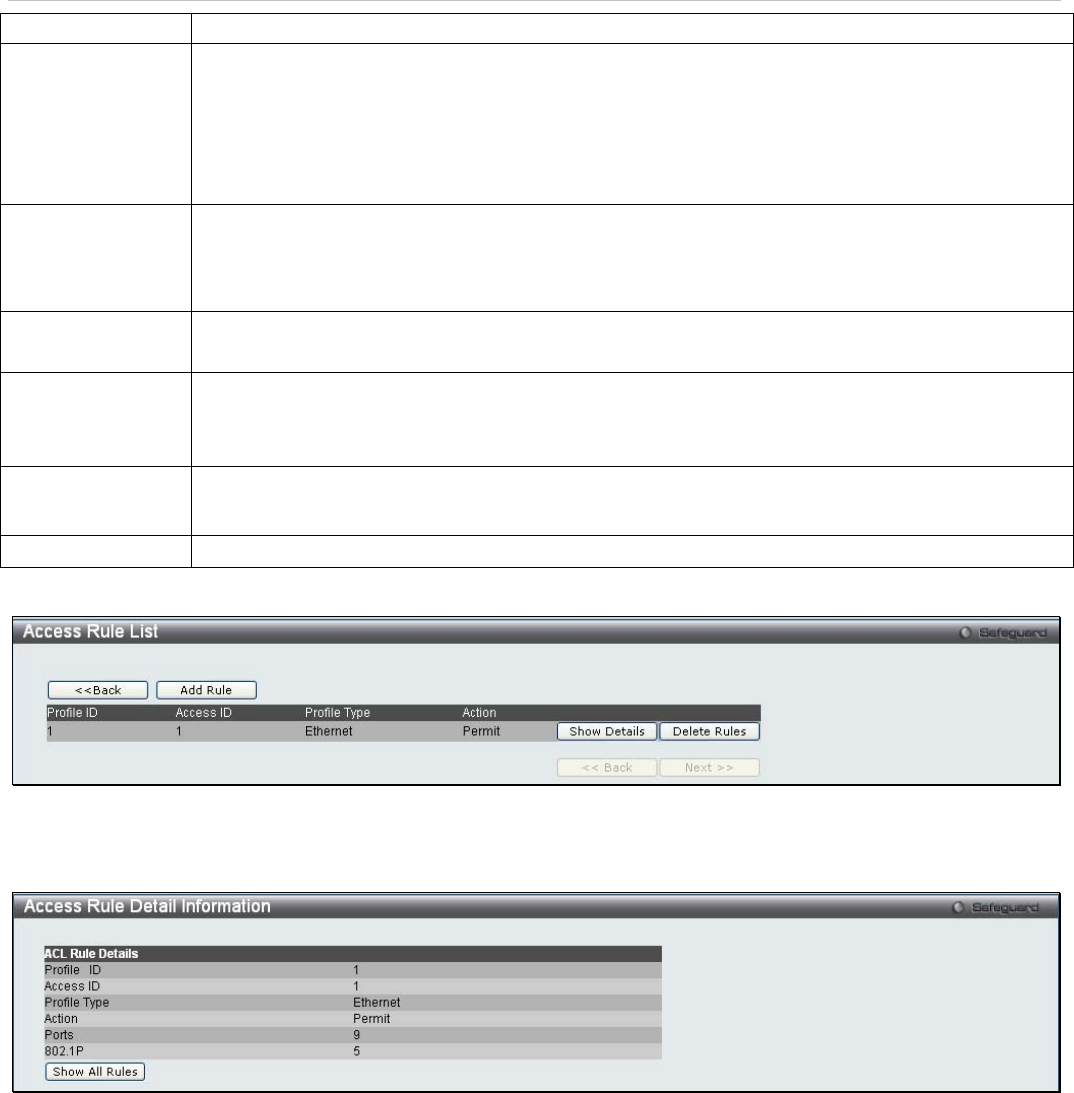
xStack
®
DES-3200-10/18/28/28F Layer 2 Ethernet Managed Switch User Manual
in the config mirror port command. Port Mirroring must be enabled and a target port must be set.
Priority (0-7)
Enter a priority value if you want to re-write the 802.1p default priority of a packet to the value
entered in the Priority field, which meets the criteria specified previously in this command, before
forwarding it on to the specified CoS queue. Otherwise, a packet will have its incoming 802.1p
user priority re-written to its original value before being forwarded by the Switch.
For more information on priority queues, CoS queues and mapping for 802.1p, see the QoS
section of this manual.
Replace Priority
Enter a replace priority manually if you want to re-write the 802.1p default priority of a packet to
the value entered in the Priority field, which meets the criteria specified previously in this
command, before forwarding it on to the specified CoS queue. Otherwise, a packet will have its
incoming 802.1p user priority re-written to its original value before being forwarded by the Switch
Replace DSCP (0-
63)
Select this option to instruct the Switch to replace the DSCP value (in a packet that meets the
selected criteria) with the value entered in the adjacent field.
Time Range
Name
Tick the check box and enter the name of the Time Range settings that has been previously
configured in the Time Range Settings window. This will set specific times when this access rule
will be implemented on the Switch.
Counter
Specifies whether counter feature will be enabled or disabled.
This is optional, the default is disabled.
Ports
Enter a range of ports to be configured.
Click Apply to display the following Access Rule List window:
Figure 6 - 8. Access Rule List window for Ethernet example
To view the configurations for previously configured rules, click on the corresponding Show Details button, which will
display the following Access Rule Detail Information window:
Figure 6 - 9. Access Rule Detail Information window for Ethernet example
To create an IPv4 ACL, click Add ACL Profile in the Access Profile List window and then use the drop-down menu
to select a Profile ID between 1 and 512, click the IPv4 ACL radio button, and then use the drop-down menu to select
a protocol ICMP, IGMP, TCP, UDP, or Protocol ID. Click Select and the following window will appear (this window will
vary depending on whether ICMP, IGMP, TCP, UDP, or Protocol ID has been selected):
155


















